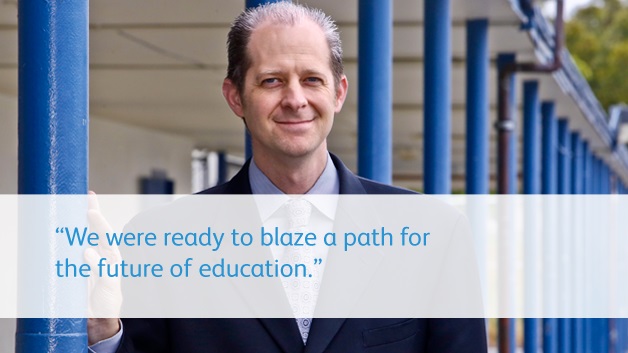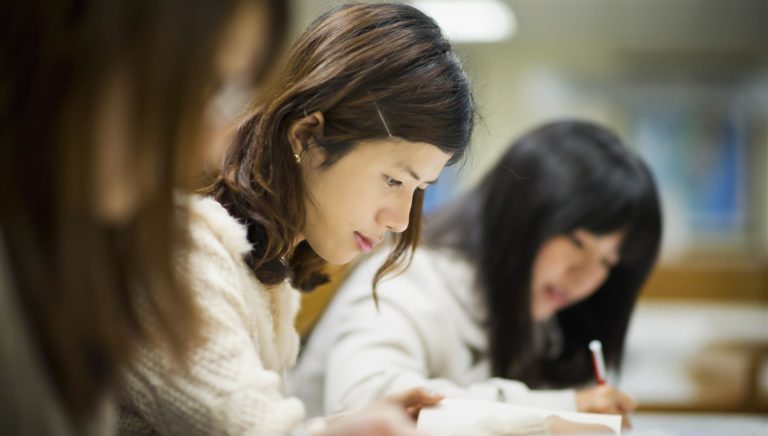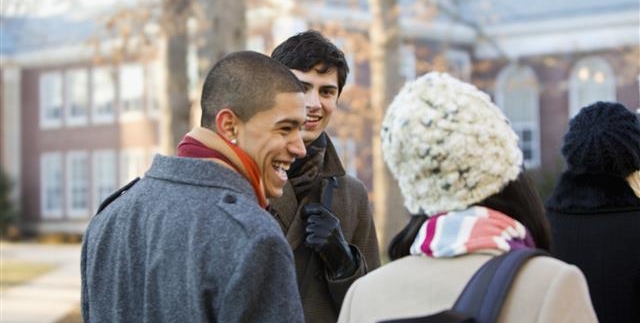By Dr. Eric Hamby, Principal Scientist and Area Manager at PARC
Dr. Devin Vodicka saw the opportunity to reimagine the fundamentals of the traditional educational system. Surrounded by passionate educators and digital tools, the superintendent of Vista (Calif.) Unified School District nonetheless knew that it would not happen overnight.
“The district’s executive director (Dr. Matt Doyle) and I shared the same sentiment about wanting change for Vista Unified,” a passionate Devin explained. “We’ve seen a lot of pockets of innovation at different schools across the country and thought ‘if we can put these pieces together, we can show that it can be done.’ We were ready to blaze a path for the future of education.”
He turned back to PARC, the famed Xerox research center, where — as an intern in 2008 — he was immersed in an innovative culture. While there, he built relationships that he knew could help turn ideas into realities and improve lives — not only for students, but for the larger community as well.
PARC researchers were excited to learn more about how students interacted with technology. Their ethnographers studied the school’s environment – such as looking at the students’ days, how the teachers and students engaged, how they used technology, and more. The scientists presented their findings, and the discussion turned into a partnership. The outcome: A recommendation for a different kind of learning – one that’s student-centered and makes every interaction personal.
From there, the idea of implementing personal learning was born. Vista was ready to use the power of data to inform teaching and create tools and processes to make a dynamic, personal learning path achievable for every student.
Personal learning is the customization of environment, teaching method and curriculum for individual learners. A two-way feedback cycle to maximize students’ academic achievement and behavioral growth, and the core curriculum builds on each student’s strengths, interests and values — they become stewards of their own learning. Though he knew it was going to be a big undertaking, it was just the change Devin knew was possible.
“Vista embarked on what many would say is impossible. That didn’t stop us. We were ready to blaze a path for the future of education,” Devin said.
The district’s leaders agreed and were eager to develop the ideas. They shared their vision and gathered input from students, teachers, parents and the community.
The students were loud and clear – they wanted personal learning. When they asked students to describe how they felt about learning, the most common response was, “irrelevant.”
“Irrelevant.” That word really hit home with district leaders.
Another student added, “I want to be a part of my learning. I don’t want teaching to just happen to me.” The district leadership team understood that any changes had to put the student at the forefront. It was time to make learning more impactful for students, and bring personal learning to life.
The community, on the other hand, was more anxious about the idea of personal learning. As with any type of change, people were not sure what “personal learning” meant, nor how it would work.
The district used the feedback as fuel and quickly went to work to modify their blueprint into a tangible plan. Once completed, the plan was met with excitement from students, teachers, parents and the community alike.
From there, Devin and his team worked with PARC to co-design a personal learning outline and entered the implementation phase. Their strategy revolved around three key factors:
- Students. Personal learning starts and ends with each individual learner and their personal education history. So, to better arm the educators for success, a digital system is being developed and will be used to house and tell each student’s story.
- Digital infusion. For this initiative to work, the schools must have the proper infrastructure and environment in place to scale personal learning. The team pinpointed the critical items that will be needed, including access to the Internet, a 1:1 ratio of devices to students, and teachers who are trained and comfortable with the tools.
- Personal pathways. Creating a personal pathway for each student is critical. With the help of a third generation technology system, students will have their own personal learning gateway.
As part of the 2015-2016 school year, 200 Vista Unified High School juniors and eight teachers will participate in the first pilot program of a personal learning platform for providing holistic student views, personal ‘playlists’ and curating student work that is fueled by analytics and recommendations. The following year this personalized approach will be rolled out to 7,000 students at two elementary schools, two middle schools and one high school.
“We’re on the road to creating learning environments that are both relevant and stimulating for all students,” Devin said. “We want students to want to come to school and stay in school. We are developing learners, and connecting students to the world of work.”
Devin and his team know the future of education is bright. Advances in technology have and will continue to shape learning experiences for years to come. The Vista Unified School District is on the road to excellence in education – one personal learning experience at a time.
Subscribe to this blog and receive email updates when we publish a new article.









I am very interested in how this pilot goes. I feel as though we are stuck in between the present, some of the past, and now the future of what teaching and learning look like.
[…] When Students Take Over the Classroom […]
So will the children be in front of a digital device all day?
Thanks for writing, Jessica. I forwarded your question to Mellis Hankin, one of the authors for this article. Here’s her reply.
“It depends on the student and how they learn best. Creating Personal Learning Pathways is about creating a learning experience for each child that best suits each individual’s needs. Some students learn best in a collaborative environment, and others thrive in a quieter, independent way. Educators — in collaboration with students and parents — will ultimately determine the best path for each student.”
Cheers,
Greg
This same idea would play well in training rather than teaching.
The idea is still evolving. Some teachers include the idea into the curriculum. Many school districts are slowly including it into day to day curriculum.
My personal opinion is students still need structure in the classroom. With out it, children would not learn anything. Teachers must follow what the district want , also follow the common core standards. That is so important. I want all children to have an opportunity to an excellent education. With out it , there will not be a future society. Time will tell if this new idea is working and helping all students.
I am a proud VUSD teacher. I am riding the WAVE. We Are Vista Everyday!! Follow me on Twitter for Great Happenings in Vista, Ca @BillKurnik
As a retired teacher who volunteers at a nearby elementary public school, I am continually frustrated by the bureaucratic, teach-to-the-test, everyone-on-the -same-page mentality. The teacher I work with struggles to meet individual needs but in general our teachers (the majority being good, dedicated people) are underpaid, overworked and unappreciated. I am interested in seeing how this program evolves.
I’m curious and excited by this idea. I’m profoundly deaf and most of the time, traditional classroom teaching didn’t work for me. I spent hours of my education being patient whilst not understanding what teachers said. As a child, I never dared to criticise the adults. I was scared about falling behind so I caught up in the evenings in the library. I learned to find out for myself what things meant and happened to tailor make my learning to suit my needs. As a result of this, I could argue that I became more inquisitive and more willing to continue educating myself even now.
Today I went to one of the world’s leading education shows in London called the Bett Show which featured a vast array of pioneering technology products for schools, even robots! I was mostly surprised by the wide range of interactive / self led e learning resources that were available and there were international buyers who were eager to transform their classrooms with IT products, develop IT training for teachers and even provide students with programming lessons!
I think that whilst technology is increasingly used in the classroom, students will be learning more and more on their own. Who knows, education might be (or in some cases, already is) disguised through the use of gaming software.
Will attainment levels change? Maybe but will e learning programmes be regulated to ensure that they are consistently of high quality? Will behavioural issues be removed if students take the lead on their own education? Or will it be a long time before e learning products recognise the varying educational needs of students?
I am curious and I think only time will tell …
I’m excited about the idea that students have a larger say in their education. I’m a grandparent now, all of my children are adults. My experience with education until college was one of an authoritarian system which stifled rather than encouraged creativity and imagination. This new idea appears to be a wonderful way to reach out and encourage individual achievement. Best of wishes for your students and teachers.